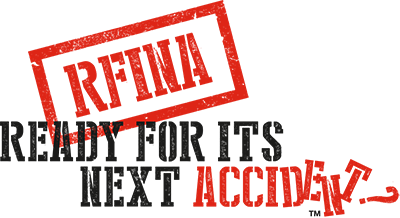Further Behind Than We Were
I have not posted anything new since February of this year because there has really been nothing comment worthy. The cars continue to change and the industry continues to wait. Mary Bara was right in 2015 More Change in the next 5 years and the rate of technological change has only accelerated since, with the repair industry further behind in 2022 than it was in 2015.
The articles and posts of the last 7 years have lost very little of their relevance, unfortunately. And to be honest I think there will be very little change for the better for the next few years.
One positive note is that there is a noticeable increase in the number of knowledgeable people talking about the need for change and this will have an impact in the future, but for now the people who are making the decisions are entrenched in their positions and staying away from these conversations.
Action is driven by either crisis or money and at this point, with the crisis not yet arrived the money sets the rules.
My feeling is that the crisis will come Dornbusch’s Law but we will be lucky in that it will be one of inconvenience rather than injury and fatalities. It is the electronics not working after a repair that will clog up the repair industry. Getting the electronics right at the scale needed, where entry level cars have several electronic driver assist and safety systems will only happen if there is an overall change in attitudes, roles and policies. These changes, forced by visible problems caused by incorrect electronic systems function after a repair will carry over to the invisible structural repairs and there will be movement toward getting these right. But it will still 3 to 4 years before the broad industry commits to real changes.
Here are some examples of what is holding back the change;
No insurance company wants to be the first to raise rates more than their competitors and if they can get away with paying for the minimum repair they will.
Private equity firms are buying into the collision repair industry in a big way and this trend will do nothing to move the industry to correct repairs. The measure of success for these firms is money and they traditionally have a short term horizon Another Significant Change There is money to be made in consolidation and trimming costs through the advantages of scale but there is no money to be made by repairing cars beyond today’s accepted minimum standard.
The flat rate technician who can make lots of money doing what he (98% of the repair techs are male) has been doing for the last 10 to 30 years will keep doing what he is doing. He has never been paid for anything other than identifiable time on the estimate repair sheet and the concept of taking time for research and not getting paid for that time collides with everything he knows about his role.
The independent shop owner is in many jurisdictions not making a lot of money now and even if the will was there for equipment upgrades the money is not. Survival in this case takes precedence over development and best bet for survival in the near term is doing what he is being paid to do, not making waves and getting on to the next car as quickly as possible. An unregulated industry and 10s all around
Government regulation is effectively non-existent Why is there still no Regulation in the Collision Repair Industry?. In some jurisdictions the rules are there, but enforcement is not. In many jurisdictions there are very few rules. This will not change in the near future. Inflation, COVID, climate change caused weather extremes, local and national health care breakdowns and a war in Europe are all very big and very real things. These demand action and take a tremendous amount of energy. With all these big things it is understandable that regulation of car repairs is very low on the list. Statistically, bad car repairs are not yet a problem expect to the person or family that becomes that statistic.
So what is a car owner to do? I have nothing new to offer here but if you believe that correct repairs are important and you take a personal interest in having your car repaired safely it can be done. Ready for Its’ Next Accident, How do you know?
